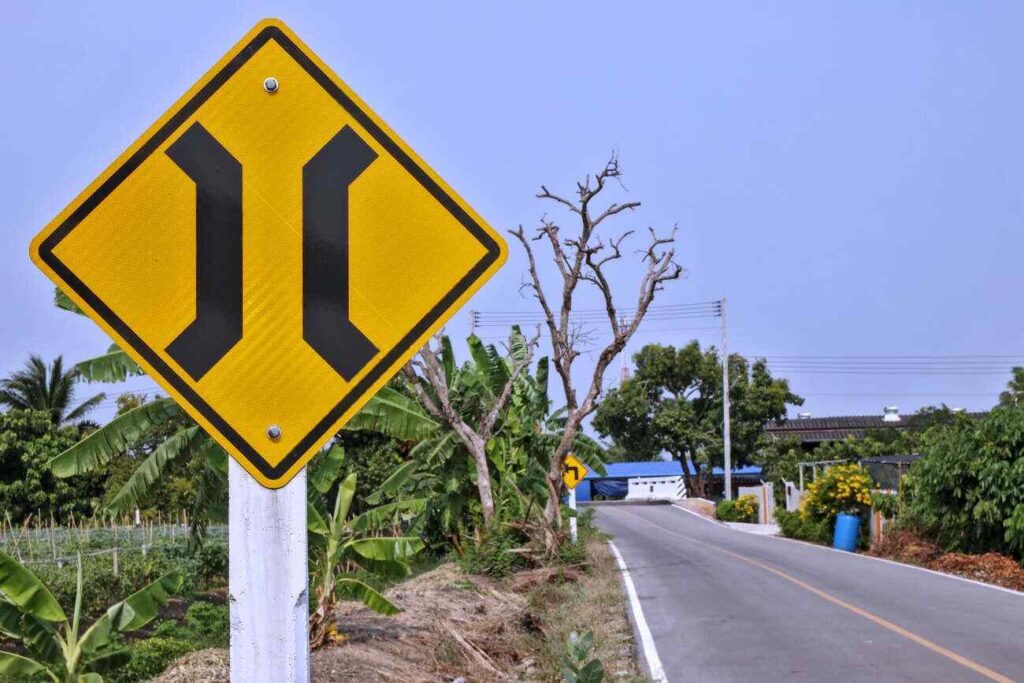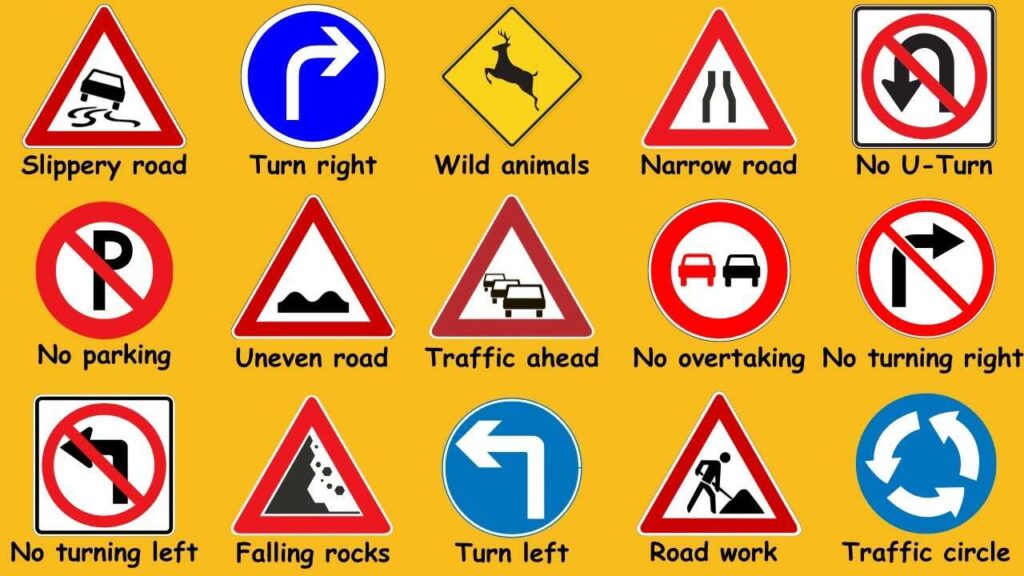Introduction to Narrow Bridge Signs
Have you ever been driving down a quiet road and spotted a yellow sign with a picture of a bridge? That’s a narrow bridge sign, and it’s there to catch your attention for a good reason. These signs warn drivers about bridges that are narrower than the road they’re on, helping prevent accidents and keeping everyone safe. But what makes these signs so important, and how should you handle them?
In this blog post, we’ll cover everything you need to know about narrow bridge signs. From what they mean to how they’re designed, placed, and used, this guide is packed with practical info. We’ll also share tips for driving over narrow bridges safely and look at real examples of why these signs matter. Whether you’re a new driver or just brushing up on road safety, this post has you covered with clear, useful advice.
What Does a Narrow Bridge Sign Mean?
A narrow bridge sign is a warning that tells drivers the road ahead narrows at a bridge. These signs are usually yellow and diamond-shaped, with a simple black symbol showing a bridge. The yellow color means “watch out,” and the bridge symbol lets you know what’s coming.
You’ll often see these signs on rural roads, in small towns, or near older bridges that weren’t built for today’s traffic. The bridge might be too narrow for two cars to pass at once, or it could have tight edges that leave little room for mistakes. The sign gives you a heads up so you can slow down and get ready.
Why Narrow Bridge Signs Matter
Narrow bridge signs are all about keeping you safe. Here’s why they’re a big deal:
- Avoiding Crashes: If a bridge is too narrow for two vehicles, the sign warns you to check for oncoming traffic. This helps prevent head-on crashes.
- Better Traffic Flow: Knowing the bridge is narrow lets you adjust your speed early, so you don’t have to slam on the brakes or swerve at the last second.
- Hidden Dangers: Some bridges don’t look narrow until you’re right on them. The sign makes sure you’re not caught off guard.
Without these signs, drivers might speed onto a bridge and run into trouble. That’s why paying attention to them can save you from a lot of hassleor worse.
How Narrow Bridge Signs Look and Where They’re Placed
Narrow bridge signs are designed to stand out and give you plenty of notice. Here’s what to expect:
- Shape and Color: They’re usually diamond-shaped and yellow, with a black bridge symbol. The bright color grabs your eye, even in bad weather.
- Extras: Sometimes, you’ll see words like “One Lane Bridge” or “Yield” nearby, giving you more info on what to do.
- Location: The sign is set up before the bridge often 100 to 500 feet ahead, depending on the road’s speed limit. This gives you time to slow down and look around.
Rules Behind the Signs
In the United States, the Manual on Uniform Traffic Control Devices (MUTCD) sets the rules for narrow bridge signs. It says they need to be easy to see, big enough for the road, and sometimes made with reflective material for nighttime driving. These rules make sure the signs work the same way everywhere, so drivers always know what to expect.
A Quick Look at the History of Narrow Bridge Signs
Traffic signs have come a long way, and narrow bridge signs have their own story. Here’s a simple rundown:
- Early Roads: Back when cars first hit the roads in the 1900s, there weren’t many signs. People just figured things out as they went, which wasn’t always safe.
- Getting Organized: By the 1930s and 1940s, the U.S. started making standard signs. The narrow bridge sign became a common warning with its yellow diamond shape.
- Today: Now, these signs are used all over the world with similar designs. They’ve gotten brighter and tougher, but their job hasn’t changed keeping drivers safe.
Knowing where these signs came from shows how much we’ve learned about road safety over the years.
What Happens If You Ignore a Narrow Bridge Sign?
Skipping past a narrow bridge sign isn’t just risky it can lead to real problems. Here’s why you should never brush it off:
- Crashes: If two cars try to cross a narrow bridge at once, they could hit head-on or scrape sides. That’s a quick way to ruin your day.
- Bridge Damage: Some older bridges can’t handle fast or heavy vehicles. Ignoring the sign might hurt the bridge or your car.
- Fines or Fault: In some places, not following traffic signs can get you a ticket. Worse, if there’s an accident, you might be blamed for not listening to the warning.
Take this example: In 2018, a driver in Ohio zoomed past a narrow bridge sign and met another car on a one-lane bridge. The crash wrecked both vehicles and left the drivers hurt. Stories like this show why these signs aren’t just suggestions they’re serious.
Tips for Driving Over Narrow Bridges Safely
Ready to tackle a narrow bridge? Here are some easy steps to stay safe:
- Ease Off the Gas: When you see the sign, slow down. It gives you more control and time to react.
- Look Ahead: Check if another car is coming from the other side. If it’s a one-lane bridge, you might need to wait.
- Tap Your Horn: If you can’t see far, a quick honk lets others know you’re there.
- Stick to Your Side: Keep your car in your lane, even if it’s tight. Don’t drift over the line.
- Wait If Needed: If someone else is crossing, let them go first. A little patience goes a long way.
These habits make narrow bridges less stressful and a lot safer.
How Technology Helps With Narrow Bridge Signs
Tech is making road safety even better,-dot-dotdot-here’s how:
- Smart Warnings: Some places are testing signs with sensors that light up or flash when another car is near the bridge.
- Apps and GPS: Navigation tools like Google Maps can warn you about narrow bridges before you get there.
- Better Visibility: New reflective coatings make signs easier to spot at night or in rain.
These upgrades are great, but they don’t replace common sense. Always keep your eyes on the road and the signs.
Clearing Up Myths About Narrow Bridge Signs
There are some wrong ideas about narrow bridge signs that can trip you up. Let’s set them straight:
- It’s Optiona: Nopethe sign is a must-follow warning, not a choice.
- The Bridge Looks Fine: Even if it seems wide, trust the sign. It’s there for a reason.
- Only Big Vehicles Need It: All drivers—cars, trucks, whatever—need to pay attention.
Getting these right keeps you out of trouble.
For any information visit Traffic signs test
Wrapping It Up
Narrow bridge signs are small but mighty tools for road safety. They warn you about tight spots ahead, helping you avoid crashes and stay in control. By slowing down, checking for traffic, and following the sign’s advice, you can cross any narrow bridge without a hitch.Next time you spot that yellow diamond, take it seriously. It’s a simple step that keeps you, your car, and everyone else on the road safe.


